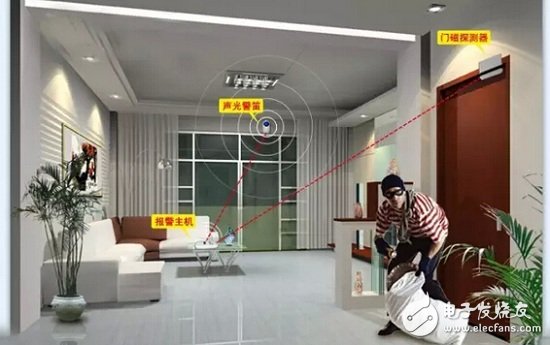Recently, commissioned by Intel-Security, the latest research report by the US market research organization pointed out that 40% of consumers believe that the use of traditional passwords in the smart home ecosystem is not a good strategy, but rather a biometric-based security solution. The survey results show that 54% of people tend to unlock fingerprints, 46% prefer speech recognition and 42% prefer iris unlocking.
The agency surveyed 9,000 users in nine cities in the United States, Britain, France, Germany, Brazil, India, Canada, Australia and Mexico, and 77% of respondents expect smart homes to be like smartphones by 2025. It has become so common and common.
On the security front, 92% of respondents expect smart homes to be hacked and potentially accessing their personal information; 89% of respondents said they would invest in security if they live in such a smart home. To ensure personal device and data security.

From the data point of view, most investigators pay great attention to the safety of smart home protection and report doubts about the current security situation. It can be seen that smart home enterprises still have a lot of room for improvement in security.
Smart home: will abandon the traditional way, increase biometrics
With the traditional password input protection scheme increasingly being rejected by users, in recent years, the development of new biometric technology has been promoted. According to market research firm ABI-Research, global biometrics technology and applications will reach a market size of more than $30 billion in 2021, a significant increase of 118% from approximately $13.7 billion in 2015.
What is biometric identification? The brief introduction is through the combination of computer and optical, acoustic, biosensor and biostatistics and other high-tech means, using the inherent physiological characteristics of the human body (such as fingerprints, faces, irises, etc.) and behavioral features (such as handwriting, sound, Gait, etc.) to identify individuals.
Because of the multi-variation and uniqueness of biological multi-factors, the reliability of the resulting intelligent authentication solution has gradually entered the eyes of manufacturers, and the consumer market has also expanded.
These biometrics enhance the identity protection capabilities of smart home products, making them less vulnerable to identity and security credentials. This helps reduce the risk of malicious entities tampering with policies such as intercepting, rewriting, and replaying attacks, including attacks that enable more advanced privileges.
Intel vice president Tom Garrison also expressed the hope that users no longer need to remember and enter passwords to use smart products.

Biometric technology is constantly upgrading
Some people may also suggest that, for example, in a TV movie, it is often seen that a thief cuts the hand of the head of the household and uses his fingerprint to pass the identification of the safe. Does it mean that the biometric identification is not safe?
In fact, in the field of biometrics, many cases have been developed to completely eliminate the above-mentioned fingerprint theft, such as finger vein recognition technology.
Finger vein technology principle and application range
Compared with traditional biometric technologies such as fingerprints, finger vein technology has a very significant advantage. The finger vein reading is based on the vein image obtained by using the near-infrared rays to illuminate the finger veins. It is an internal feature that does not leak out, so it is not easily extracted like a fingerprint, and there is no accidental scratching of the fingers and skin damage during work. The situation that the fingerprint is unrecognizable; the finger vein image requires that blood flow must pass, thus ensuring that the finger vein is in the absolute sense of living body recognition.
This refers to the vein identification technology originating from research projects of Hitachi Medical Institute. In the project, the researchers found that each person's finger vein images obtained by near-infrared illumination are different, which creates conditions for new identity authentication. After more than 10 years of optimization and improvement, it has been solidified into the finger vein recognition module and promoted globally. ATM machines, recorders, and access control and attendance equipment that appear in daily life are all developed based on the finger vein module.
Internet + biometric + smart home
In many integration projects, it also shows that what users really need is not a single biometric technology, but a safer, more convenient and more controllable application environment. The invention, maturity, popularization and application of finger vein recognition technology, combined with face recognition technology based on the evolution of cloud computing, can clearly see the development path and application range of biometric technology.
Xiaobian has reason to believe that relying on the development of the Internet environment, focusing on the small scenes that meet the needs of end users, while continuously optimizing the smart home application experience, and effectively improving the security level of smart home scenarios, biometric technology will certainly help smart homes. The field has achieved more rapid development.
5 Burner Gas Hob,5 Burner Gas Cooker,5 Burner Hob,Glass Gas Hobs
xunda science&technology group co.ltd , https://www.gasstove.be